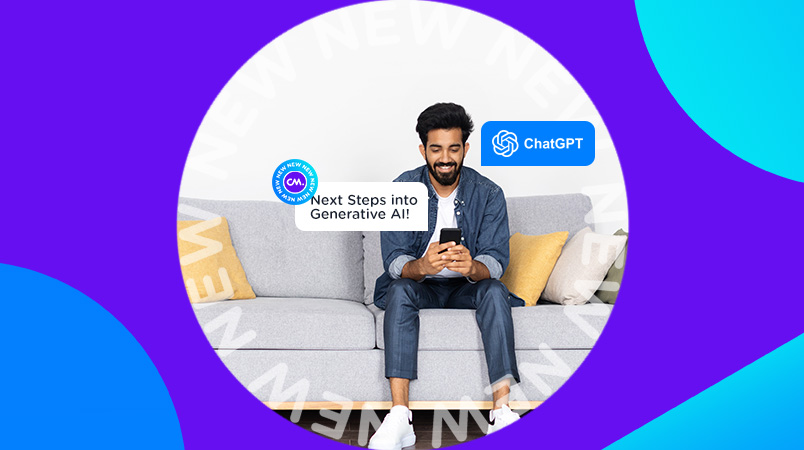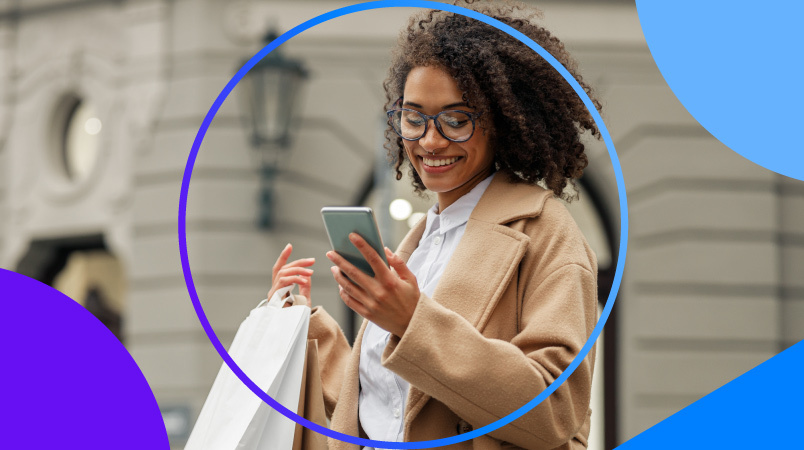Millennials and Gen Z want a seamless experience across all touchpoints, online and off. 70% is happy to give you their personal data to make it happen (less than 30% of Boomers would do the same). It is time to prepare for a brand-new data-driven, hyper-personalised, reality.
We have three suggestions where to get started. First, let's start with the basics.
What is hyper-personalisation?
Amazon helped define old-school personalisation when they said that, ‘Customers like you also bought this'.
But hyper-personalisation takes things to a whole new level. It is now the key to a seamless and competitive customer experience, and the trend is cutting across industries and disciplines — from retail to banking to marketing and digital advertising.
Here’s our working definition of hyper-personalisation: “Hyper-personalisation is a data-driven approach to delivering tailored products, sales, service, and CX in line with an individual customers’ specific needs and wants in real-time”.
There are many implications. One of which is that old-school generic segmentation strategies — emails or discounts based on demographic segments, for example — will not cut it anymore.
Instead, for the new decade, you should be looking to gather hundreds of data points, from across all your customer touchpoints, and create a unique digital customer profile for each of your customers, for example in a Customer Data Platform. Then, by applying advanced analytics, you can tailor messaging, and begin initiating all sorts of hyper-personalised service and sales conversations, such as:
- A simple automated email saying, “You’re running low on contact lenses and solution, Lisa. Let us send a new package to your home. If you’d like to confirm the sale, click here.”
- An automated message could be sent out to a customer saying, “Hi Steve, each year, you buy five or six shirts in our January sales. We’ve put together a selection of your favourite brands in your sizes and fittings. Would you like to try them on in our Manchester store this weekend?”
- On your fashion brand’s web store, an automated script could initiate a virtual assistant chat with a customer, saying, ‘Hi Sarah, we saw you’re looking for some new shoes, but didn’t complete your purchase. What about these shoes? They match the blouse and skirt you bought a few weeks ago. What do you think?’
Our end-game as a brand or business should be automated and hyper-personalised marketing, sales, service, and CX, as much as humanly possible. Most companies will take quite some time and effort to get there. But as a wise man once almost said, a journey of a thousand miles begins with three steps.
Below are our three suggestions on how to prepare for hyper-personalisation.
1. Start building your internal business case
As the 2019 State of the Connected Customer report shows, today’s customer expectations really are higher than ever before.
- 84% say being treated like a person, not a number, is very important;
- 77% expect you to fully understand their needs and expectations; and
- 70% say that seamless handovers and contextualised engagement, based on earlier interactions, are very important.
Plus, according to McKinsey, personalisation can reduce acquisition costs by as much as 50%, lift revenues by 5-15%, and increase the efficiency of marketing spend by 10-30%.
With 92% of today’s consumers willing to walk away after just two or three negative interactions (PwC CX Survey) the choice is simple: prepare to personalise your customer interactions or lose business.
The stats above should help, but we recommend building and making your own business case for hyper-personalisation. This trend will not go away.
2. Connect customer service into your company’s CX initiative
Most digital and CX transformations put far more attention on sales and marketing than on service. This is a mistake, as human customer service conversations are critical touchpoints in the customer experience.
Yes, customers would much rather help themselves, but if you have your self-service and automation on point, and they still reach out — then you can guarantee it is a ‘make or break’ moment. The data and information to be gained from these interactions are critical to personalising their experience.
Connecting CX and service will not only help solve major CX challenges such as journey mapping, but it will also allow you to incorporate customer feedback into CX improvement.
Supplementing transactional data (what customers do) with behavioural data (information about why customers do what they do, and how they feel) is one of the main paths to hyper-personalisation.
It's advisable to set up a data warehouse that stores customer data (as well as data on your service team’s productivity and performance). This is one of the reasons why our Agent Inbox integrates with your CRM or eCommerce platform. This integration provides contextual data, right next to the customers’ question to help you deliver more relevant and personal service - regardless of the channel the customer uses. And it is why we provide customer feedback mechanisms, too.
3. Join the fight for a ‘single version of the truth’
Orchestrating hyper-personalisation is incredibly difficult. It involves defining and communicating a company-wide vision on customer-centricity. It involves aligning many departments, connecting legacy systems, and updating processes. It also involves data governance, reporting across functions, and more.
But, we can bet you that there’s at least one person in your company that has been pushing for a ‘single version of the truth’ on customers forever. This basically means that anyone in your company should be able to pull any information about any customer, into any system, from any other system, whenever and wherever a customer contact is initiated — online or offline, on your website, or via mobile.
This is a huge task, but also an essential one. Hyper-personalisation across a customer’s full experience is impossible without it. We suggest you find out who that person is and say that they have your support.
Building a single, comprehensive view of their customers’ needs and behaviours, that is shared across all departments, and connecting sales, marketing, service, and cx is the only way to go.
The takeaways: Build the business case for hyper-personalisation. Connect service with CX. Actively break down the silos between sales, marketing, service, and CX. Chase the holy grail of the ‘Single Version of the Truth’ on customer data.
*This article was originally published on robinhq.com








